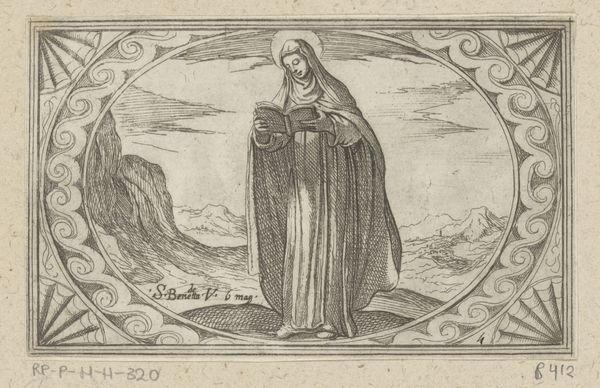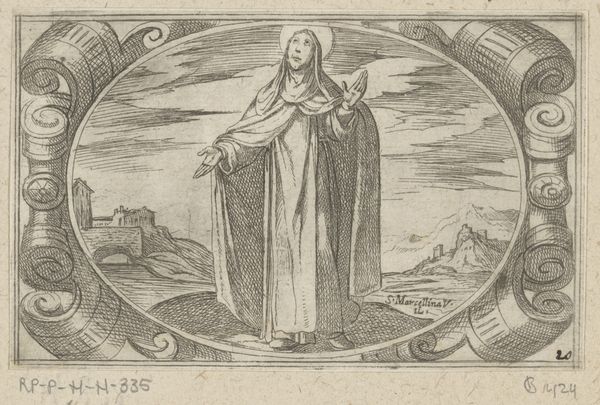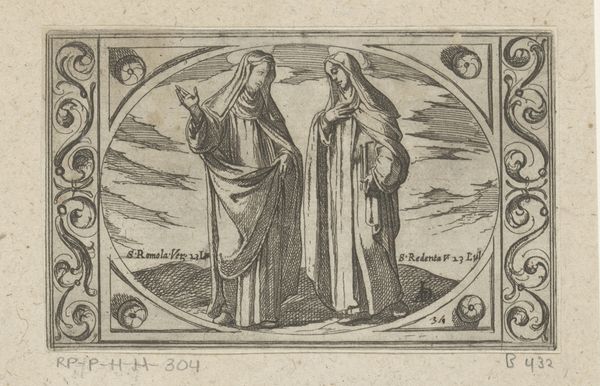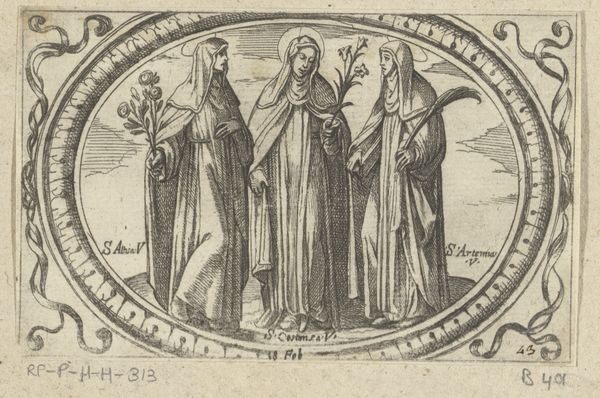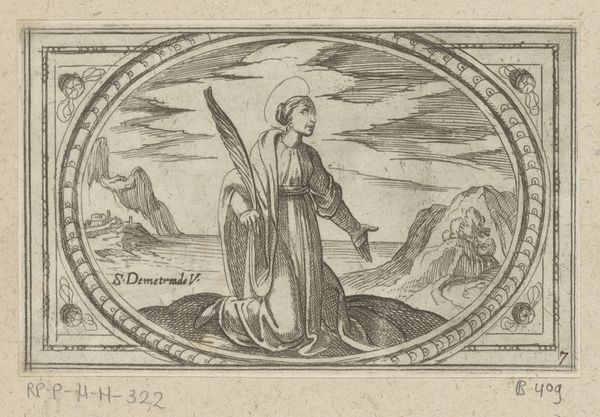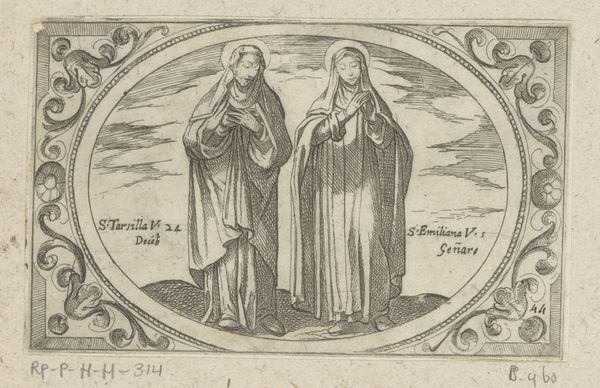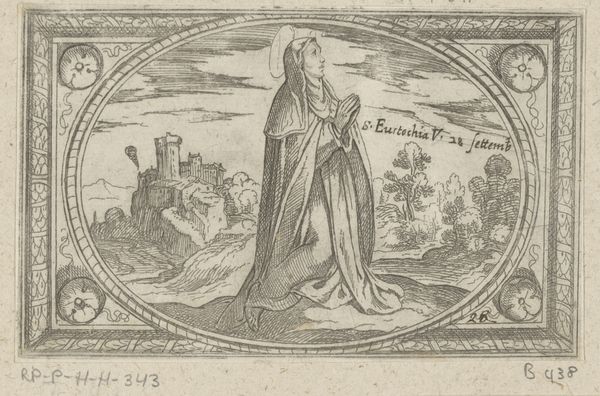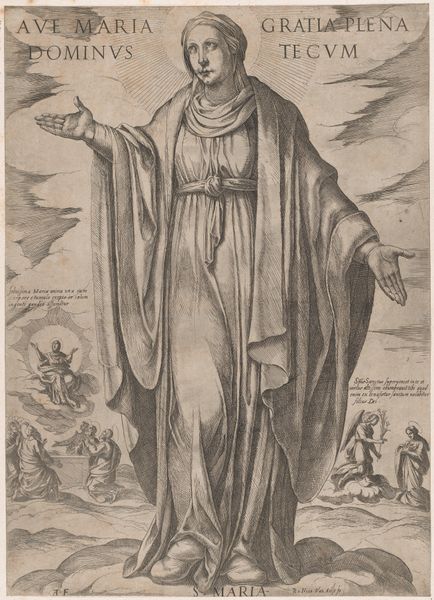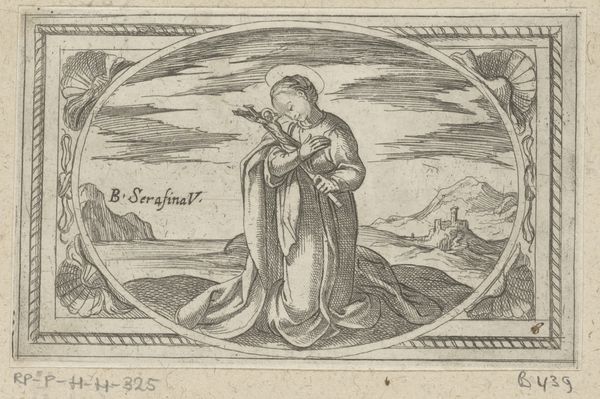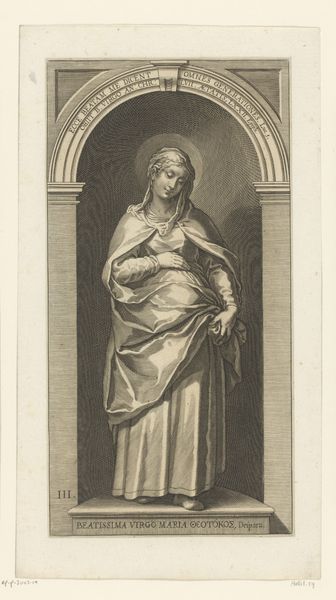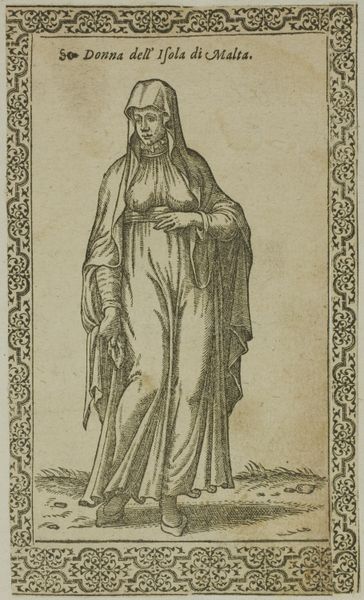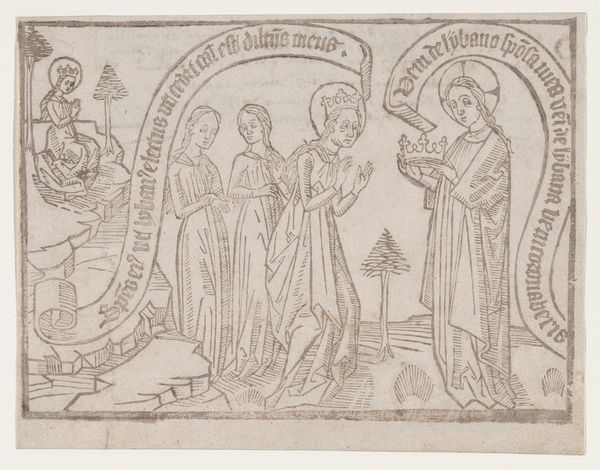
drawing, print, etching, ink, engraving
#
drawing
#
pen drawing
# print
#
etching
#
landscape
#
mannerism
#
figuration
#
ink
#
engraving
Dimensions: height 73 mm, width 114 mm
Copyright: Rijks Museum: Open Domain
Editor: This is "H. Asella," an engraving in ink by Antonio Tempesta, created sometime between 1565 and 1630. The figure of the saint seems quite still, almost frozen. What can you tell me about this work? Curator: Indeed. Here, we see Saint Asella depicted in a landscape, framed by an ornate border. It is important to view this through the lens of the Counter-Reformation, a period marked by the Catholic Church’s renewed emphasis on religious piety and the role of female saints as exemplars of faith. Consider Asella's austere clothing, her modest gaze. How does that strike you? Editor: Well, there's a sense of humility and dedication. She looks pious, but I can't quite grasp its impact on the larger social context. Curator: Precisely. Prints like these were not merely decorative. They played a crucial role in disseminating ideals of female sainthood across society, often reinforcing prescribed gender roles. Notice the palm frond, a symbol of martyrdom – or here maybe sacrifice. How does that resonate with contemporary understandings of women's roles in society and religious institutions? Editor: That raises a lot of complex questions. On one hand, she seems like an empowered figure. On the other hand, I see that these prints might also enforce the subservient positions that women often occupied during that time. Curator: Exactly! It’s about understanding these artworks not as isolated objects, but as active participants in broader power dynamics, and questioning how such images were—and still are— instrumental in forming societal values. What is your overall feeling about Antonio Tempesta and his intentions with this work now? Editor: That's a lot to think about. It reframes how I perceive these historical images. I think that looking closely and examining them within their social and political environments is essential. Curator: Agreed. Context breathes life into art, urging us to ask difficult, but necessary, questions.
Comments
No comments
Be the first to comment and join the conversation on the ultimate creative platform.

